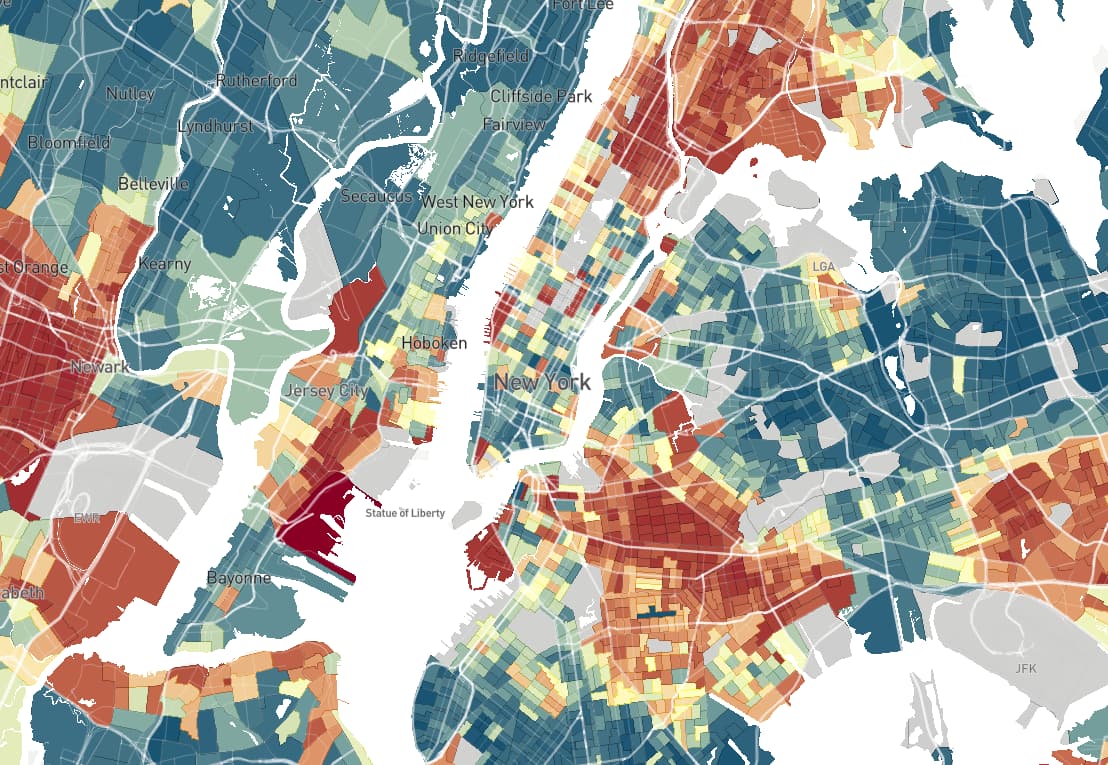
We construct a publicly available atlas of children’s outcomes in adulthood by Census tract using anonymized longitudinal data covering nearly the entire U.S. population. For each tract, we estimate children’s earnings distributions, incarceration rates, and other outcomes in adulthood by parental income, race, and gender. These estimates allow us to trace the roots of outcomes such as poverty and incarceration back to the neighborhoods in which children grew up. We find that children’s outcomes vary sharply across nearby tracts: for children of parents at the 25th percentile of the income distribution, the standard deviation of mean household income at age 35 is $5,000 across tracts within counties. We illustrate how these tract-level data can provide insight into how neighborhoods shape the development of human capital and support local economic policy using two applications.
First, we show that the estimates permit precise targeting of policies to improve economic opportunity by uncovering specific neighborhoods where certain subgroups of children grow up to have poor outcomes. Neighborhoods matter at a very granular level: conditional on characteristics such as poverty rates in a child’s own Census tract, characteristics of tracts that are one mile away have little predictive power for a child’s outcomes. Our historical estimates are informative predictors of outcomes even for children growing up today because neighborhood conditions are relatively stable over time.
Second, we show that the observational estimates are highly predictive of neighborhoods’ causal effects, based on a comparison to data from the Moving to Opportunity experiment and a quasi-experimental research design analyzing movers’ outcomes. We then identify high-opportunity neighborhoods that are affordable to low-income families, providing an input into the design of affordable housing policies. Our measures of children’s long-term outcomes are only weakly correlated with traditional proxies for local economic success such as rates of job growth, showing that the conditions that create greater upward mobility are not necessarily the same as those that lead to productive labor markets.
Click here to view the Opportunity Atlas
Any opinions and conclusions expressed herein are those of the authors and do not necessarily reflect the views of the U.S. Census Bureau. All results have been reviewed to ensure that no confidential information is disclosed. The statistical summaries reported in this paper have been cleared by the Census Bureau’s Disclosure Review Board release authorization number CBDRB-FY18-319.